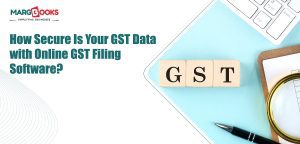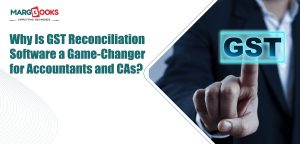Navigating the intricacies of Goods and Services Tax (GST) verification can be quite a task for any business, especially with frequent updates, compliance rules, and complex filings. Whether you’re a small business owner or managing operations for a large enterprise, staying on top of your GST obligations is crucial to avoid penalties and maintain smooth functioning.
But here’s the good news: GST verification doesn’t have to be complicated.
With the right tools and practices in place, you can simplify the entire process. Let’s break down how your company can ease the burden of Goods and Services Tax verification and focus more on what truly matters – growing your business.
What Is Goods and Services Tax (GST) Verification?
Before we dive into the ‘how’, let’s quickly understand the ‘what’.
GST verification refers to the process of validating a GSTIN (Goods and Services Tax Identification Number) and ensuring that the tax collected and reported matches with what’s reflected in your returns and vendor data. It includes:
- Verifying supplier GSTINs to prevent input tax credit (ITC) mismatches
- Ensuring invoices are GST-compliant
- Reconciling purchase and sales data with filed GST returns
- Tracking GST filings for timely compliance
Manually handling this is not only time-consuming but also prone to human error. That’s where digital solutions come in.
Why Simplifying GST Verification Is Important for Your Business?
GST-related errors can cost you dearly. From ITC rejections to penalties and notices from the tax department, the risks are high. Here’s why simplifying this process should be a top priority:
- Time-saving: Automated checks reduce manual work significantly.
- Improved accuracy: Less human involvement means fewer mistakes.
- Better compliance: Stay ahead of deadlines and avoid fines.
- Peace of mind: When your records are in order, you can focus on core business goals.
Smart Ways to Simplify GST Verification
Now, let’s look at how you can simplify GST verification for your company.
1. Use Reliable Accounting Software with GST Capabilities
Investing in a robust accounting software is one of the smartest decisions you can make. A good accounting tool automatically:
- Validates GSTINs while creating invoices
- Generates GST-compliant bills
- Prepares GSTR reports (GSTR-1, GSTR-3B, etc.)
- Helps reconcile mismatches in ITC claims
One such trusted name in the Indian market is Marg Books. It offers a user-friendly interface and powerful automation that makes GST compliance feel effortless. From invoice generation to real-time GST reports – Marg Books covers it all.
2. Automate GSTIN Verification
Manually verifying every GSTIN you interact with is impractical, especially if you have multiple vendors or clients. Automation tools can help validate GSTINs in bulk and in real-time. Marg Books, for example, integrates GSTIN verification directly into its workflow, saving your team hours of work.
3. Integrate GST Verification with Inventory Management Software
If your business deals with a lot of inventory movement, you should consider integrating GST tracking with your inventory management software. This way, every inward and outward movement of goods is recorded along with the applicable taxes.
Many inventory software solutions ( MargBooks) now offer seamless GST integration, allowing you to:
- Track item-wise tax details
- Sync purchase and sales with GST returns
- Avoid input/output tax mismatches
This real-time integration ensures that your GST records stay accurate and updated.
4. Stay Updated on GST Rules and Filing Deadlines
The Indian GST regime is dynamic. Staying updated on changes in rules, filing formats, and deadlines is essential. Choose a software that pushes alerts and notifications so you never miss a compliance date.
MargBooks regularly updates its modules in line with government guidelines, so users don’t have to worry about tracking every single change manually.
5. Reconcile Data Regularly
One of the biggest pain points in GST is data mismatch. This usually happens when the supplier hasn’t filed returns correctly or when your invoices aren’t matched.
Here’s what you can do:
- Reconcile your GSTR-2A and GSTR-2B with purchase records
- Track vendor filing status
- Cross-check HSN/SAC codes and tax rates
With automated reconciliation available in tools like MargBooks, even this becomes a matter of a few clicks.
Why Marg Books is a Game-Changer for GST Verification?
When it comes to simplifying GST-related tasks, MargBooks offers a one-stop solution for businesses. Here’s how it stands out:
- All-in-one platform: Combines accounting, billing, GST filing, and inventory management
- GST compliance automation: GSTIN verification, e-invoicing, return filing, and reconciliation
- User-friendly interface: Even non-accountants can use it efficiently
- Government-approved and updated: Regularly syncs with the latest GST portal changes
Final Thoughts
GST may seem complex, but with the right approach and digital tools, it can become a seamless part of your business routine. Start by investing in an integrated system, MargBooks, which combines accounting software, inventory management software, and GST automation in one platform.
With such smart solutions at your fingertips, Goods and Services Tax verification won’t be a hassle anymore; it’ll just be another well-managed part of your operations.




